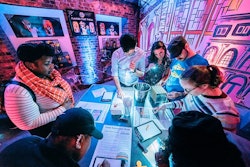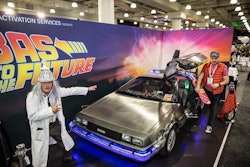
Pamela Norwood is the chief creative officer of Pamela Norwood Creative, a New York-based marketing and events firm. Until April, she served as the general manager of experiential for New York Media, where she oversaw the bicoastal Vulture Festival and New York magazine’s 50th birthday celebration. She has also led marketing and events for Travel & Leisure, GQ, Rolling Stone, the Condé Nast Bridal Group, and more.
Every event pro will say it’s all in the details, because, quite frankly, it is. The baseline for anyone who is successful in our business has an almost O.C.D.-like attention to elements that ensure an event runs perfectly but looks easy from the outside. It takes massive amounts of planning and communication. Most people reading this are probably already pros at making that happen.
We’ve all been to events with the pieces perfectly in place—that are timed as planned, with great food, jazzy decor, perky music, and happy guests—but that are missing soul. And then there are the experiences that seem to sweep you up, make you feel like you’re a part of something bigger than yourself, and get your inner voice to say, “This is it. I am at the epicenter of what matters right now.” That’s what we’re all going for.
Here are my rules for sparking those emotional connections by spinning some magic.
1. Rethink everything. Every time. Don’t allow yourself or your team to create formulas that are repeated. Really think through every consumer touchpoint every single time. Treat each project like it’s an original masterpiece in the making. If you ever find yourself saying, “Yeah let’s do that. It worked for…” the internal alarm bells should be sounding.
This isn’t just about challenging yourself or ethics—there is a very practical reason behind it. Do something more than once and your team will be bored. Your events will start to feel like a factory floor, and that is always somehow telegraphed to guests. Would you rather have dinner at NoMad or Red Lobster? It’s like that.
2. Kindness is king. Your team is gold. Staff members are your front-line ambassadors, and their energy is everything. Excited, empowered teams set the tone for a happy, exciting event. And confident people who are having a great time in their role create fantastic experiences for guests. Conversely, beaten-up staffers will take it out on guests in one way or another, whether they mean to or not.
The secret is a 360-degree service philosophy, which means treating everyone with the same, highest level of respect. And I mean everyone—from the guy delivering the orange juice, to the interns, to the C.E.O. of the company. Kindness, enthusiasm, and especially humor trickle down, so set an example as the gold standard by going out of your way to assist and support. Knit your people together; the rewards are huge.
[PULLQUOTE]
3. Delight creates engagement. It’s all about creating the unexpected to trigger emotional connections. This is the most challenging piece, but it’s also the most fun. Start by looking at every touchpoint. Make a list. And with your best, most scrappy creative people, look at that list with fresh eyes, and start every sentence with “What if we….” Take event elements that can be rote, where guests expect a certain cadence or experience—like the front door, where talent performs, how food is served—and turn it upside-down in some way.
When I created [Travel & Leisure’s] Global Bazaar some years ago, we wanted every moment to feel transporting. We drilled down everywhere we possibly could, from the obvious, like decor talent, and lighting, all the way to not providing event maps for guests. You never know what’s around the corner in a foreign country, so we planned for that same element of surprise there. When it came to the look of the team, we couldn’t settle for a standard, so we found an Indian apparel manufacturer on Alibaba and had uniforms imported for the wait staff.
Another great example is an event I attended at the Marfa Film Festival in Texas. It was held at a thrift shop and to get a drink, you were asked to choose a glass from the shop’s collection of mismatched and weird jelly jars, tea cups, and beer mugs. You paid the cashier 50 cents or a dollar, and then handed it to the bartender for a cocktail. All of that—the thrift shop venue, the lady working the register who was the real deal with a beehive and all, the exchange of money for a drink, and the country band that played among old golf slacks—took guts to offer up for the audience of film and media types. But it was genius. The venue was completely disarming, everyone in the room naturally connected over what they chose to drink out of, a coffee mug with a martini in it became a personal style statement, and at the end, no one wanted to leave. It was a simple but bold idea that turned what could have been a boring industry party into a happening.
4. Create moments of discovery. We have all been there. Guests walk into an event, get a drink, and then stand in one spot looking around, kind of just waiting for the “thing,” whatever that is, to happen. There’s no magic at that party. It’s a trip to the dentist.
Create moments of discovery for guests. Give them a reason to move through the space. And, of course, make it 100 percent selfie bait. Our culture is all about being at the center of the situation right now.
5. Play to the highest common denominator. Come up with a dream guest profile, a dream demographic for your client, and envision all the details with that guest in mind. Even if 99 percent of your guests don’t know the difference between foie gras and a Big Mac, elevate the experience.



















